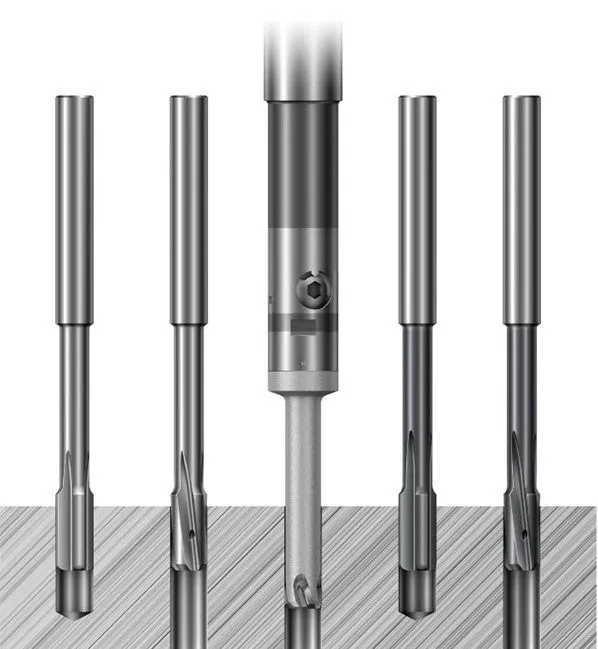Nguyên công doa là gì?
What is reaming?

Reaming is a finishing operation of high-precision holes performed with a multi-edge tool. High surface finish, superb hole quality and close dimensional tolerance are achieved at high penetration rates and small depths of cut.
Initial considerations for reaming operations
When performing reaming operations, there are several parameters that affect reamer tool life to consider:
- Cutting depth
- Speed and feed
- Workpiece material
- Run-out
- Offset
- Coolant pressure and concentration
- Interrupted cuts
- Workpiece clamping
- Geometry and grade
- Tool length
- Correct tool holders
General hints on reaming
To obtain the best results when using reamers it is essential to make them ‘work’. It is a common fault to prepare holes for reaming with too little stock left. If insufficient stock is left in the hole before reaming, then the reamer will rub, quickly show wear and will result in loss of diameter. It is equally important for performance not to leave too much stock in the hole.Read more about stock removal
- Select the optimum type of reamer and the optimum reaming speeds and feeds for the application. Ensure that the pre-drilled holes have the correct diameter
- The workpiece must be held rigid and the machine spindle should have no play. Read more about Workpiece set-up
- The chuck must be of good quality. If the reamer slips in the chuck and the feed is automatic, breakage of the reamer may occur
- Keep the tool overhang from machine spindle to a minimum
- Use recommended lubricants to enhance tool life and ensure that the fluid reaches the cutting edges. As reaming is not a heavy cutting operation, soluble oil with 40:1 dilution is normally satisfactory. If dry machining, air blasting may be used with grey cast iron. Read more about Cutting fluid
- Do not allow the flutes of a reamer to become blocked with chips
- Before the reamer is reground, check concentricity between centres. In most cases only the bevel lead will need regrinding
- Keep reamers sharp. Frequent regrinding is good economy, but it is important to understand that reamers cut only on the bevel and taper leads and not on the lands. Consequently only these leads need regrinding. Accuracy of regrinding is important for hole quality and tool life
Bài viết khác
Tiện các loại vật liệu khác nhau
27/02/2025
Sử dụng nước làm mát trong gia công tiện
27/02/2025
Cách lựa chọn dao tiện
27/02/2025
Tăng tuổi thọ dao tiện
27/02/2025
Phương pháp đạt chất lượng sản phẩm tiện
27/02/2025






